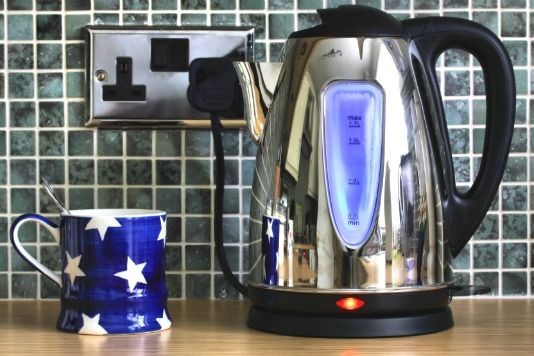
Another day, another food-related argument in the lovefood office. Should you invest in kitchen appliances, or spend as little money as possible on them?
Charlotte – invest!
I was drooling over a beautiful cream-trim jug kettle when the conversation began. My colleague Matt was disgusted that this particular model, made by De’Longhi, cost £79.99 – “an absolute fortune to spend on a kettle!”
But I think, and so replied, that you should expect to pay at least £50 for a decent kettle. And what I mean by ‘decent’ is one that will last for at least five years; one that will look attractive in any kitchen; and one that won’t scald your hand when pouring.
I learn from experience – in my student days, I spent tuppence on kitchen appliances, saving my pennies for nights out instead. But the less you spend, the quicker the kettle breaks. One Tesco Basics kettle of mine lasted a record two weeks before the heating element blew – what should I expect from something that cost £9.99?
The current model I have, this little number from Dualit, has lasted six years to date, and still looks beautiful. Plus there’s no limescale build-up and it comes to the boil just as quickly as it did on day one. I don’t see it breaking anytime soon (though it probably will, now I’ve said that) and I’m sure that it’s a cheaper option in the long term. If I’d have bought a cheap £15-odd kettle every year, my total expenditure would be £90 by now (more than the cost of my Dualit).
It’s the same principle for most other kitchen appliances. I’ve wasted £40 on a substandard bread maker when really I should have gone for the £150 option in the first place. And our ice cream machine kitchen test proved that the more expensive the machine, the better the end product. As did our juicer kitchen test (although it was the second-most expensive machine that came first).
But conversely, if you’re buying a kitchen gadget as opposed to an appliance, I think you can get away with the cheap option. We proved that a standard box grater beats even the most expensive grating machine, for example, and I’d never spend money on peelers, strawberry hullers, pineapple slicers and the like – in those instances, a good kitchen knife always comes out on top.
Matt – save your pennies
I'm really not convinced.
The kettle I've got right now cost under £20, and it's going strong after two years. Charlotte reckons that a £50 kettle should last at least five years. So I'd call that £10 a year and say that mine's already got the same value for money as hers and isn't showing any signs of letting me down, despite a lot of daily use. And it's not bad-looking.
There is a little limescale building up on the element, but it's not affecting performance and I've now got a filter attached to my kitchen tap, so that will hopefully put an end to it.
Saying that, I'd be willing to pay a bit more for a kettle that had an in-built water filter.
To the same effect as the above though, I've got a £10 toaster that I've now had for four years, and an extremely cheap sandwich toaster (now discontinued, but the 4.7/5 star rating speaks for itself) that gets a fair amount of use and still makes delicious toasties.
If I had the choice of two kettles, one £20 and one £80, I'd take the £20 one and have the remaining £60 to buy some really nice ingredients. And after all, just because something was cheap, that doesn't mean that you can't take a broken appliance back to the shop, lesson learned, and demand a refund.
But until that happens to my kettle, I'm sticking with it.
You might also like
Kitchen test: best ice cream machines